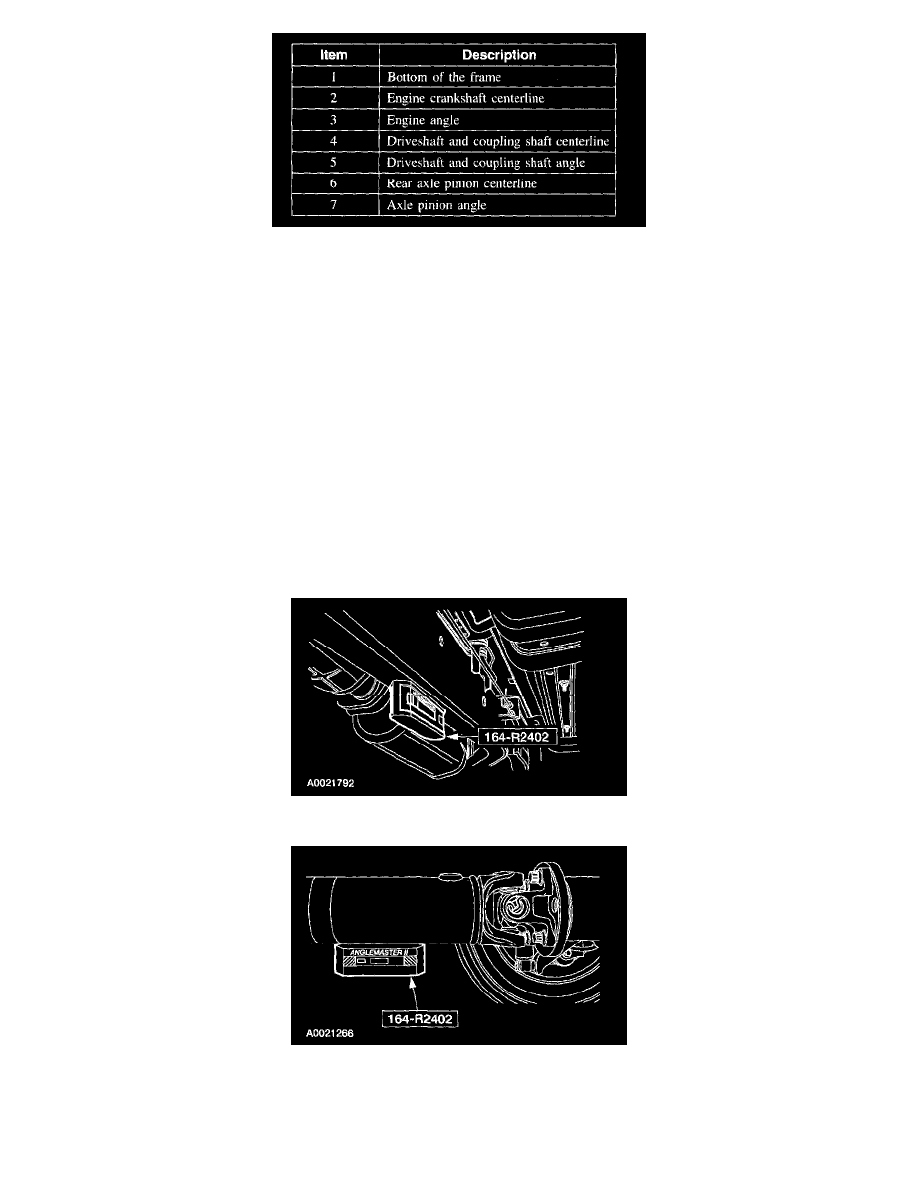Aviator 2WD V8-4.6L DOHC (2003)

Part 2 Of 2
Driveline Angle
An incorrect driveline (pinion) angle can often be detected by examining the driving condition in which the vibration occurs.
A vibration during coastdown from 72 to 56 km/h (45 to 35 mph) is often caused by an excessive U-joint angle at the axle (pinion nose downward).
Driveline Angle
Driveline angularity is the angular relationship between the engine crankshaft, the driveshaft, and the rear axle pinion. Some of the factors determining
driveline angularity include ride height, rear spring, and engine mounts.
A vibration during acceleration, from 56 to 72 km/h (35 to 45 mph) may indicate an excessive U-joint angle at the axle (pinion nose upward).
When these conditions exist, check the driveline angles.
1. CAUTION: Prior to checking driveline angularity, inspect the U-joints for correct operation.
Check the vehicle for evidence of overload or sagging. Check for specified air pressures in all four tires.
2. Normalize the suspension.
3. Drive the vehicle onto a drive-on hoist or front end alignment rack.
4. Inspect the suspension and chassis. Verify the vehicle curb position ride height is within specification.
5. Place the special tool on a clean, level section on the bottom of the frame. Press the ALT Zero button to calibrate the inclinometer to the vehicle.
